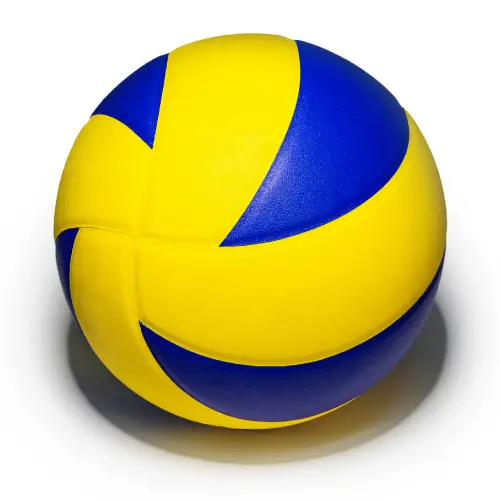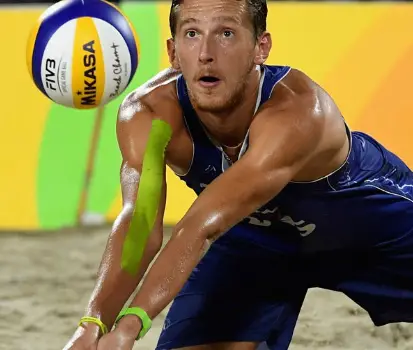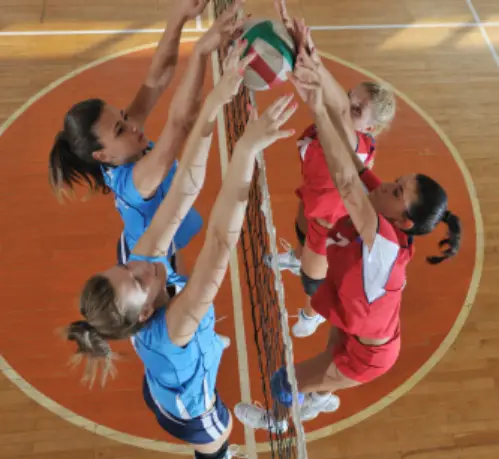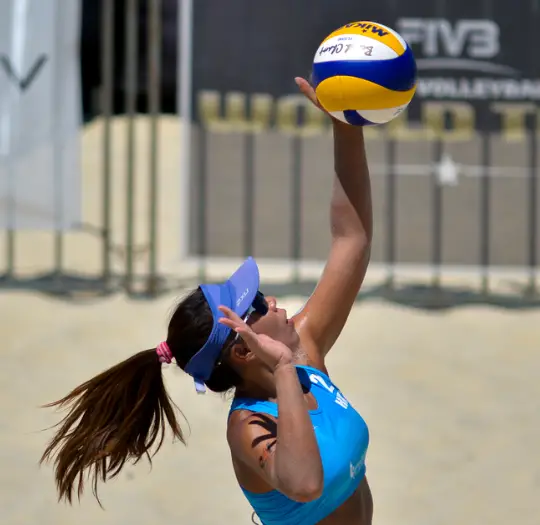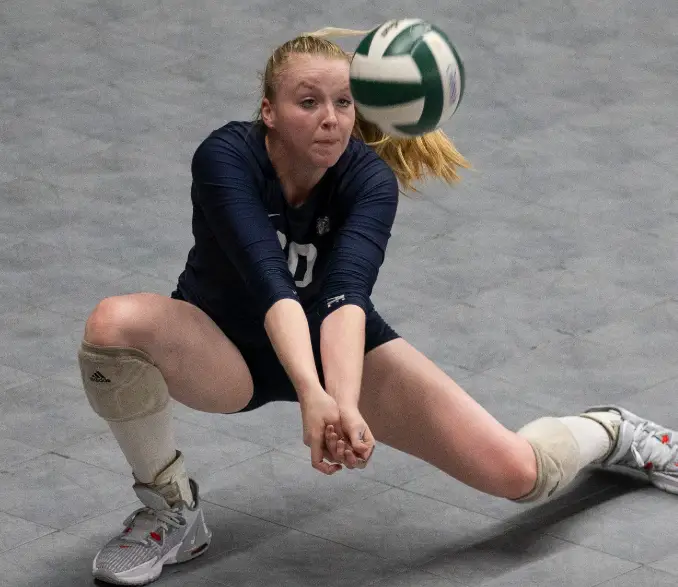As one of the most important skills in volleyball, passing can make or break a team’s game. Passing, also known as the forearm pass or the reception, is the act of transferring the ball over the net from the opponent’s serve or attack to a teammate to continue the play. A good pass is crucial in a team’s defensive strategy, as it sets up the next play and creates opportunities for attack. In this article, we will discuss questions that will help you improve your passing technique in volleyball.
What are the key elements of passing in volleyball?
Before improving your skills in passing, it is essential to understand the key elements involved in volleyball passing. First and foremost, passing requires quick reflexes and instincts to read the trajectory of the ball coming over the net. It involves a player to be in a low and athletic position to react quickly to the ball. The pass is made with the forearms, and the player must be able to control the ball’s direction while maintaining a good amount of power to send the ball over the net smoothly.
The most basic position in passing is to use your forearms to make contact with the ball. The best passing starts with perfecting this basic technique. The arms should never be fully straight during a pass. Besides, the player must learn to use the weight transfer in their body movements to position themselves to the ball’s incoming trajectory. In addition to this, the player must also be aware of the target and recognize the position of their teammate, who they intend on passing to. To develop effective passing skills, the player should work on improving their footwork, hand positioning, and reaction time.
How can you improve your footwork and body positioning when passing?
Footwork is one of the most fundamental aspects of passing. To become an effective passer, you need to master the right footwork and body positioning while receiving the ball. The main part of movement when passing is keeping the body low and balanced. Here is a breakdown of how you can improve your footwork and body positioning when passing:
a. Stay Low: The key to good passing is to get your body as low as possible, but still remain balanced for easy movement. When receiving the ball, the player should be in a squatting position with their knees bent, and their back straight. The body’s position should be stable, which means the player should not lean forward or backward.
b. Move Your Feet: Instead of just standing still and waiting for the ball, the player should move their feet to position themselves to the anticipated spot the ball will land. During the movement with their feet, the player should never cross their legs, and keep their feet shoulder width apart.
c. Move Quickly: The player should quickly shift their weight on the balls of their feet while moving their feet. They should aim to get their forearms in front of their body to make contact with the ball. Additionally, as the ball will be coming in fast, a quick reaction is crucial for maintaining the position during the pass.
What is the correct hand positioning for passing?
The main contact point in the pass is the forearm. It is important to use proper hand positioning to make optimal contact with the ball.
To get the right contact when passing, here are a few tips on hand positioning:
a. Use your non-dominant hand: Your non-dominant hand should be used as a guide to direct the ball toward your target. This means your non-dominant hand should be placed around the midline of your body, while your dominant forearm is fully extended from your body, creating a flat surface for the ball to make contact.
b. Hold hands together: When passing, ensure that you are making contact with the ball using both arms. This means holding both hands together to make an effective surface area while in contact with the ball. Additionally, you should keep your hands relaxed to form a surface that won’t damage your wrist or forearm.
c. Make a platform: To create an optimum surface for the ball to make contact when passing, the player should create a platform with their arms. This platform is achieved by keeping the elbows straight, the wrists locked, and the forearms parallel to each other. The hands should be slightly apart to create a flat surface area.
How can you strengthen your wrists and forearms for better passing?
Having strong wrists and forearms is critical in improving the effectiveness of passing. While there is no magic recipe for developing strong wrists and forearms, there are specific exercises that can help. Here are a few drills you can perform to develop stronger wrists and forearms when passing:
a. Dumbbell Wrist Curls: Sit down in a chair with your forearm resting on a flat surface. You then hold a dumbbell or any weighted object with your hand, and, with your elbow resting on the surface, your palm should be facing the ceiling. Using your wrist, curl the weight up and down, repeated for 8 – 10 reps. Repeat the same step for another arm.
b. Reverse Wrist Curls: Similar to the first drill, this involves holding a lightweight, and your palms facing downwards, again placing your elbows on a flat surface, with your wrist underneath, and curling up and down several times, with about 12 repetitions.
c. Squeeze Rolling Pin: Most people might never have thought of this, but gripping a rolling pin and holding it and squeezing it for a few minutes works out your wrist and forearm muscles, helping in improving passing techniques.
How can you improve your reaction time for passing?
Reaction time is crucial when receiving the ball during a volley. The faster a player can react to the ball, the more time and control they will have when it comes to returning the ball. Here are a few tips on how to boost your reaction time:
a. Practice makes perfect: The best way to improve your reaction time is by practicing the act of passing as often as possible. Practicing this skill regularly will help you to get used to quick movements with your feet and your hands.
b. Eye-Hand coordination: Eye-Hand coordination is essential in how fast a player can react to a ball. One can improve their reaction time by incorporating drills and exercises that improve their perceptual awareness.
c. Anticipation: Anticipation is also significant in developing faster reaction times. In a game situation, the player should always anticipate the ball’s movements, whether from the opponent’s serve or an incoming attack.
What are some drills and exercises to improve passing technique?
To improve passing skills, practicing drills and exercises to isolate and improve actions involved in passing, footwork, and hand positioning. Here are a few examples of drills and exercises that can help in improving passing technique:
a. Partner Wall Pass Drill: This drill involves a player standing about three feet away from a wall with their partner on the other side of the wall. The player then practices passing the ball into the wall, and the partner will be on the other side to receive the ball and pass it back.
b. The Chair Drill: This drill involves the player sitting on a chair with their feet out, with arms in a passing position where the partner rolls the ball to them. This drill helps players to maintain body positioning and perfect her passing technique while stationary.
c. The Defensive Drill: This drill helps the player to improve their reflexes and alertness. The player should set up a partner as an attacker and then work on passing by moving side to side to control the ball and hit it back to the attacker.
Conclusion
In conclusion, improving passing technique in volleyball requires a lot of effort, with many different aspects to consider. Concentrating on the player’s footwork, hand position, reaction time, and muscles strength are key in taking your game to another level. Practicing drills and developing good fundamentals will help the player internalize the techniques required, giving them the confidence to make on-the-spot plays, improve on receiving the ball, and keep their team’s game going.
